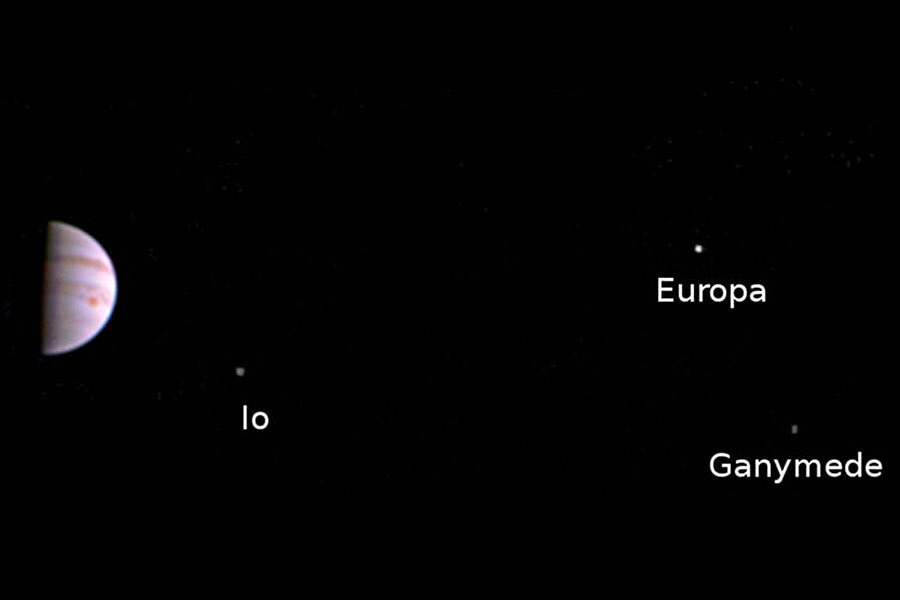First in-orbit image of Jupiter has scientists rejoicing
Loading...
After almost five years traversing the solar system, NASA’s Juno probe has reached its destination, and it now has a picture to prove it.
The first in-orbit photo to be released by the Juno team was taken by a visible-light camera called JunoCam on July 10th, when the spacecraft was still 2.7 million miles from Jupiter. It depicts not only atmospheric features of the giant planet, including the famous Great Red Spot, but also three of its biggest moons: Io, Europa, and Ganymede.
Juno began its orbit of the solar system’s biggest planet on July 4, then fired up its visible-light camera only six days later. High resolution images will come in a few weeks, say mission scientists.
"This scene from JunoCam indicates it survived its first pass through Jupiter's extreme radiation environment without any degradation and is ready to take on Jupiter," said Scott Bolton, principal investigator from the Southwest Research Institute in San Antonio. "We can't wait to see the first view of Jupiter's poles."
Indeed, one of JunoCam’s main roles is to capture color images of the planet’s poles and cloud tops. And while the photos will contribute to scientific research, their primary purpose is public engagement.
"JunoCam will continue to take images as we go around in this first orbit," said Candy Hansen, Juno co-investigator from the Planetary Science Institute, Tucson, Ariz. "The first high-resolution images of the planet will be taken on August 27 when Juno makes its next close pass to Jupiter."
Initially, the spacecraft will settle into an orbit that lasts 53.5 days, known as the capture orbit, using Jupiter’s gravity to slow it into a steady pattern. Over time, it will slow to a 14-day orbit.
But even before principal research begins, Juno has already begun racking up its epic achievements.
When Juno arrived at Jupiter, it was moving faster than any man-made object has ever gone. Had it failed to slow down and submit itself to Jupiter’s gravitational field, it would have careened off into space before its mission ever truly began.
Having surmounted that initial obstacle, Juno will make 37 orbits, spending almost a year and a half studying the planet. At its most intimate approach, the spacecraft will pass a mere 2,600 miles from the uppermost wisps of Jupiter’s clouds. The three hours on either side of these closest encounters will be the most critical for scientific study.
Juno’s primary goals are to peer beneath that cloud cover and to study Jupiter’s magnetic and gravity fields. It aims to analyze the atmospheric water vapor, gathering evidence to help determine how Jupiter formed.
In some ways, the most exciting aspect of the mission is the fact that, for the first time in history, an Earth-based craft will pass over Jupiter's poles, a region ablaze with X-ray aurora so intense they would shine brighter than the sun, if one could stand on the planet’s surface to gaze upon their wonder.
"We have models that tell us what to expect, but the fact is that Juno is going to be immersed in a strong and variable magnetic field and hazardous radiation, and it will get closer to the planet than any previous orbiting spacecraft," said Dr. Bolton. "Juno's experience could be different than what our models predict – that's part of what makes space exploration so exciting."









